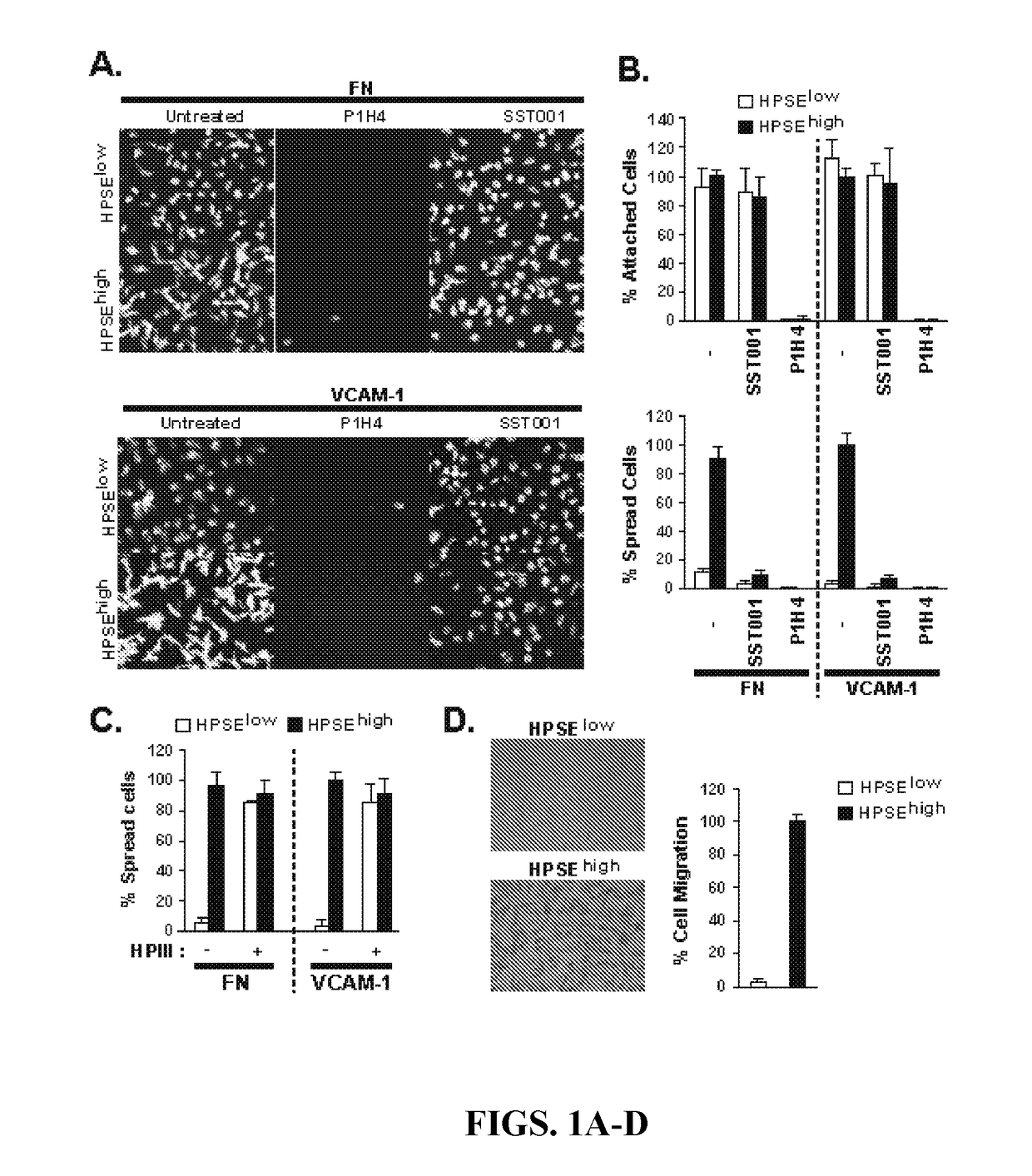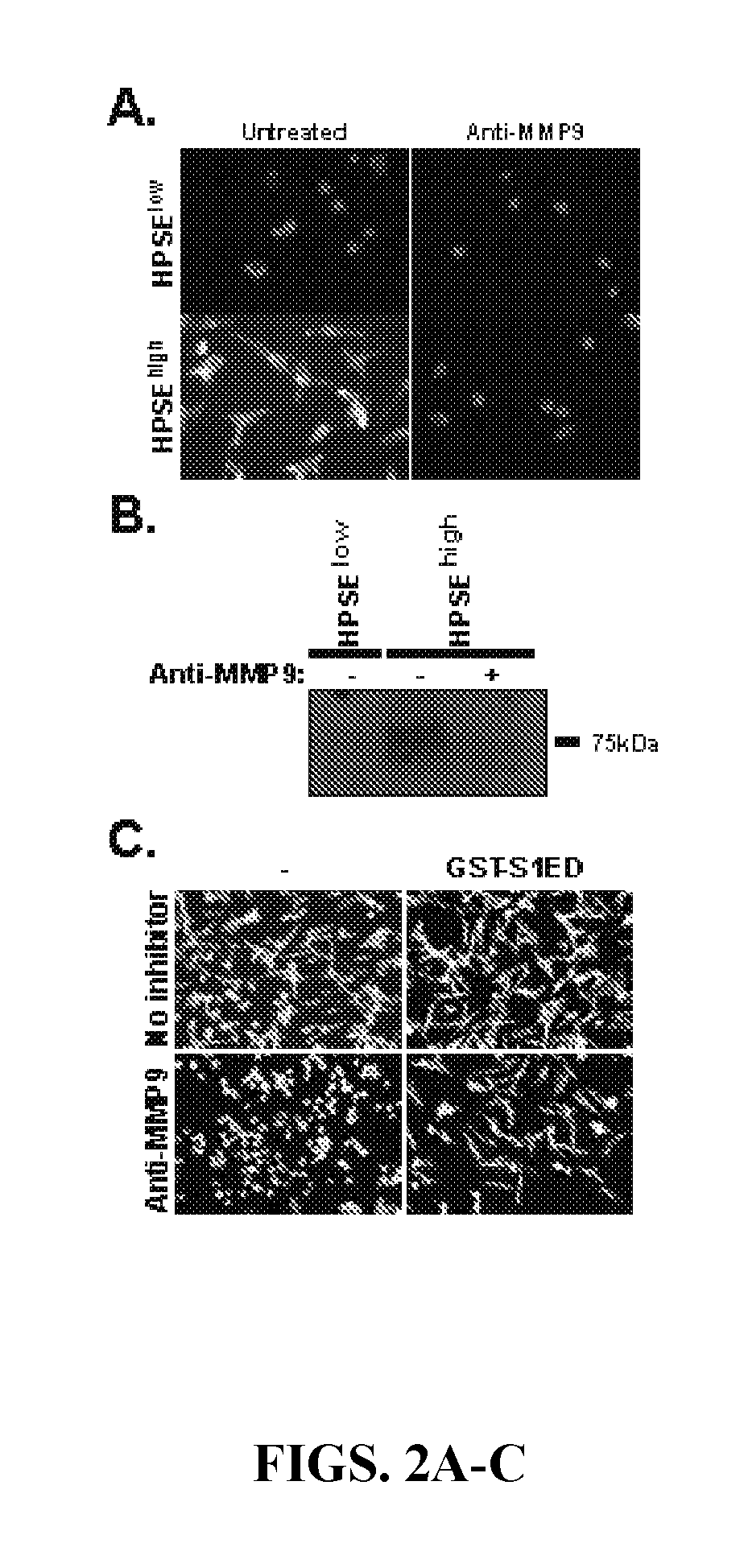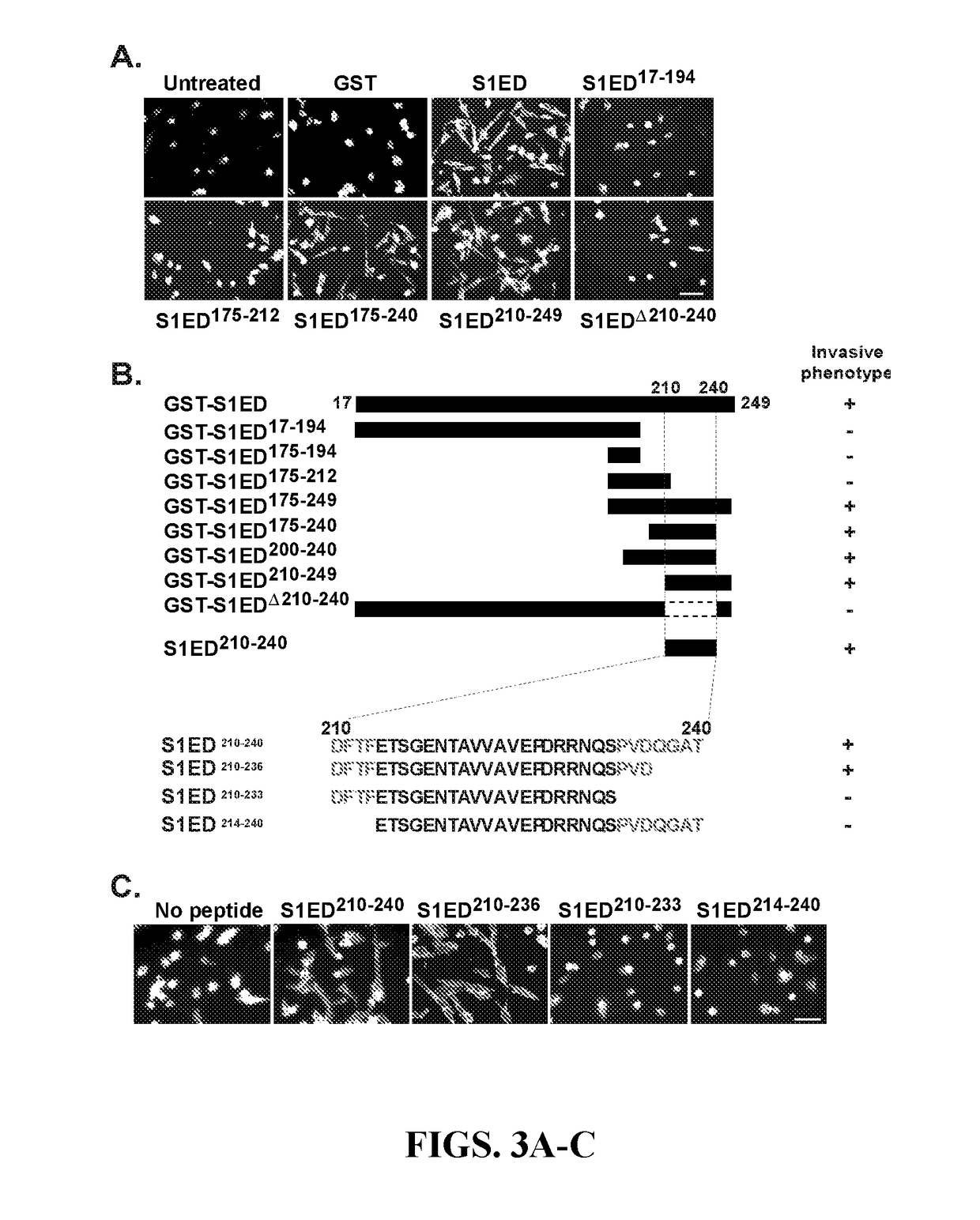Syndecan peptides and polypeptides as inhibitors of vascular endothelial growth factor receptor-2 (vegfr2) and very late antigen-4 (vla-4)
a technology of vascular endothelial growth factor and inhibitory peptides, which is applied in the direction of peptide/protein ingredients, pharmaceutical active ingredients, medical preparations, etc., can solve the problems of poor prognosis, high levels of shed sdc1 in serum, and resistance of patients, and achieve the effect of inhibiting pathologic scarring or wound repair
- Summary
- Abstract
- Description
- Claims
- Application Information
AI Technical Summary
Benefits of technology
Problems solved by technology
Method used
Image
Examples
example 1
and Methods
[0248]Reagents.
[0249]SST0001, an N-acetylated glycol split heparin is a potent inhibitor of HPSE and was kindly provided by Sigma-tau Industrie Farmaceutiche Riunite S.p.A. (Pomezia, Italy). S1ED210-240 peptide from GeneScript Corporation (location) was reconstituted in DME medium (Invitrogen) 200 mM HEPES (pH7.4) (Sigma). VEGFR2 inhibitor Vandetanib (ZD6474) was obtained from LC Laboratorues (Woburn, Mass., USA). VEGF165 was obtained from PeproTech (Rocky Hill, N.J., USA). Recombinant GST and GST-mouse-S1ED proteins were prepared as previously described (Beauvais et al., 2004a; 2004b). Rabbit anti-pY1175 VEGFR2 serum (mAb 19A10) and rabbit anti-VEGFR2 (mAb 55B11) were obtained from Cell Signaling Technology (Danvers, Mass., USA). Mouse anti-human VEGFR2 serum (CH-11) and mouse anti-α4-integrin (P1H4) were obtained from Millipore. Polyclonal antibodies against human Sdc1 were affinity-purified as previously described (Beauvais et al., 2004a). All secondary antibodies were...
example 2
[0264]Adhesion and Spreading of CAG Cells on FN or VCAM-1 is Enhanced by HPSE.
[0265]Myeloma cells expressing high levels of HPSE are more invasive than cells expressing low levels of the enzyme (Yang et al., 2002; Mahtouk et al., 2007 and Yang et al., 2005). To test whether such cells also display increased adhesion to FN and VCAM-1, cell adhesion ligands expressed in the myeloma tumor niche, CAG myeloma cells transfected with the cDNA for HPSE and expressing high levels of the enzyme (HPSEhigh) were compared to cells transfected with empty vector alone that express low endogenous levels (HPSElow). When plated onto FN or VCAM-1, both cell types were observed to attach equally (FIGS. 1A-B). However, HPSEhigh cells spread rapidly and form a polarized morphology, whereas the majority of the HPSElow cells do not (FIGS. 1A-B). To confirm that the spreading of HPSEhigh cells is attributed to HPSE expression, HPSE was inhibited by pre-treatment with the HPSE inhibitor SST0001 (Ritchie et a...
example 3
n
[0284]Multiple myeloma is an incurable cancer in which high expression of shed Sdc1 is linked to poor outcome. Expression of HPSE, which trims the HS chains on Sdc1 leading to increasing expression of shed Sdc1 leads to aggressive disease and poor outcome. However, the molecular mechanisms underlying the bioactivity of shed Sdc1 remain largely unknown. In the present study, the inventors reveal that shed Sdc1 activates VEGFR2 to promote an invasive phenotype. Mechanistically, the native, membrane anchored Sdc1 engages VLA-4 and is required for it to form high affinity adhesions with its ligands, the matrix ligand FN or stromal cell / endothelial cell receptor VCAM-1. When Sdc1 is shed, it acquires the additional ability to mediate VEGFR2 interaction with VLA-4 clustered to these adhesion sites, leading to VEGFR2 activation. This requires VLA-4 clustering to these adhesion sites. This traces to an active site, aa210-236, in the Sdc1 ectodomain that can be mimicked by a short peptide e...
PUM
 Login to View More
Login to View More Abstract
Description
Claims
Application Information
 Login to View More
Login to View More - R&D
- Intellectual Property
- Life Sciences
- Materials
- Tech Scout
- Unparalleled Data Quality
- Higher Quality Content
- 60% Fewer Hallucinations
Browse by: Latest US Patents, China's latest patents, Technical Efficacy Thesaurus, Application Domain, Technology Topic, Popular Technical Reports.
© 2025 PatSnap. All rights reserved.Legal|Privacy policy|Modern Slavery Act Transparency Statement|Sitemap|About US| Contact US: help@patsnap.com



